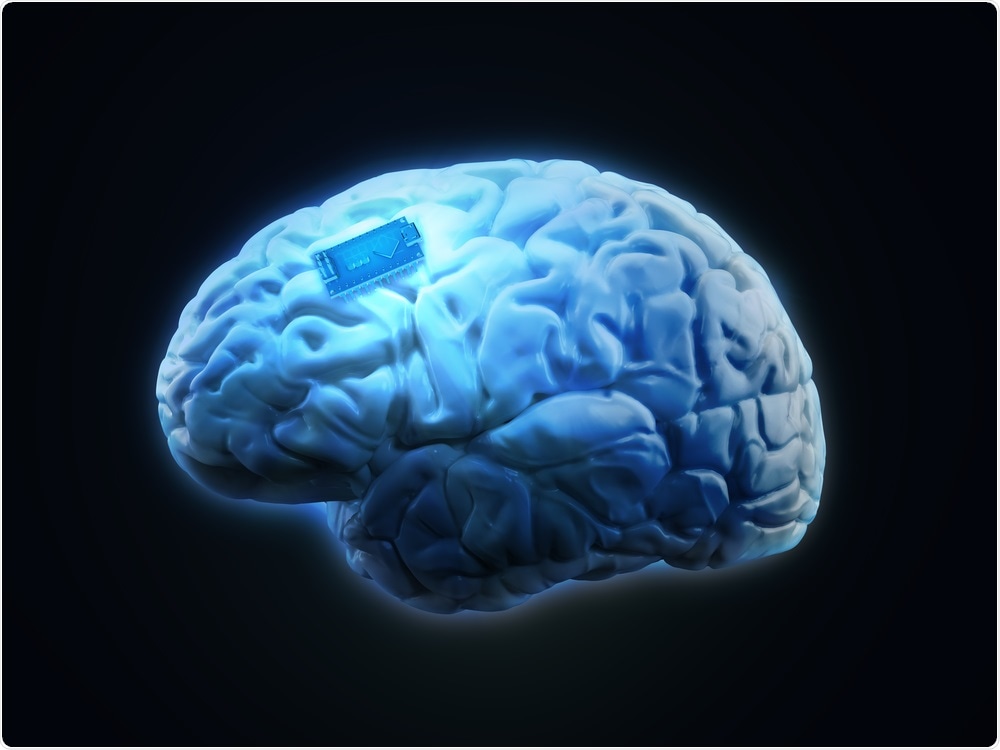The battle with obesity is now set to go digital, with the development of tiny brain chips that could alter the activity of the brain area involved in experiencing pleasure from food. The chip, called a responsive neurostimulation system (RNS), recently showed success in a trial using mice and is now about to go into a clinical trial involving six humans with morbid obesity.
 Mopic | Shutterstock
Mopic | Shutterstock
The current study recorded electrical activity from a brain region called the nucleus accumbens, in mice as well as one human with uncontrollable obsessive-compulsive disorder, all of whom were anticipating an immediate powerful reward (high-fat food and financial reward, respectively).
Reward anticipation was marked by stronger than normal delta waves. The RNS chip responds to this increase by triggering electrical stimulation to this area. The outcome is a persistently reduced food intake in binge-eating mice when exposed to high-fat food.
Increased vulnerability to experiences which offer a feeling of reward is called impulsivity. This phenomenon is frequently observed in many neuropsychiatric disorders, and has been linked to binge eating and obesity.
At present, no tool or drug exists that can intervene in this self-gratification impulse before it is carried out. In the current study, the scientists identified a brief window of anticipation just before the gratification of the desire. This period offers a chance to intervene to prevent inappropriate gratification behavior.
Preventing binge eating
The scientists stimulated binge eating in mice by exposing them for an hour each day to extremely satisfying high-fat food. Once binge-eating was established, they looked for specific brain wave changes immediately preceding the intake of this food.
They found that strong delta waves occurred in the nucleus accumbens at 30% higher power during this short period of anticipation. This confirmed the association of this anticipatory pattern with high-fat food, but not other pleasurable stimuli.
The nucleus accumbens is a part of the brain that produces a feeling of pleasure. It forms a vital part of the reward circuits and is active during food-related pleasurable stimuli. Its activity is also linked to several factors that are associated with a higher risk for overeating or obesity.
The next step was to use this pattern to set off a responsive electrical stimulus to the nucleus accumbens whenever the power of the delta wave went beyond a preset limit. The result was compared with three other protocols, namely:
- constant electrical stimulation over the whole one hour when high-fat food was available (called deep brain stimulation, DBS);
- stimulation manually triggered when a remote observer saw the mouse beginning to eat the high-fat food
- random stimulation throughout the one hour of exposure with the total stimulation agreeing to that given by the RNS protocol
Among the four protocols tested, RNS and manual stimulation showed a marked reduction in binge-eating behavior which lasted even when the stimulation was absent. Moreover, RNS did not result in any other significant social or motor inhibition, suggesting a lack of undesirable effects.
The system was originally designed to counteract seizures
The RNS was first approved by the US Food and Drug Administration (FDA) as an add-on treatment people with partial onset seizures. It is designed to monitor electrical brain activity continuously and respond with a targeted electrical shock.
The original device was used to recognize the specific pattern of brain waves that precede a seizure and deliver a small electrical shock to the seizure onset zone. This stimulation arrests the impending seizure, forming a closed intracranial loop system.
Before they could apply this technology to obesity, the scientists needed to identify an equivalent pattern of reward-anticipatory brain activity in humans. They discovered the same kind of brain wave pattern in the human nucleus accumbens using electrographic techniques.
A last resort for those who have tried all other weight loss interventions
The human participants will have the chips implanted for at least 18 months, and the total duration of the trial will be five years. The aim of this research will be to test the safety and feasibility of the procedure. If successful, the chip will be programmed to allow suppression of this activity.
The researchers emphasize that their aim is to help treat those with morbid obesity and not for casual weight reduction. Thus, the device should only be used in those with a body mass index (BMI) over 45 who have failed to lose weight even with advanced therapies like gastric bypass surgery or cognitive behavioral therapy. In the words of researcher Casey Halpern, “These are patients who are essentially dying of their obesity.”
The researchers have a long way to go. They are now looking at splitting the brain’s response to various types of food into its various components. This will help distinguish how the brain acts when faced with healthy food compared to fatty foods. Another crucial element will be looking at how the reward feelings in response to food can be separated from other reward feelings.
The scientists also want to ensure that RNS does not result in the suppression of all feelings of enjoyment when faced with pleasurable things, an experience called anhedonia, or depression, associated with a lack of interest in life.
The study was published in the Proceedings of the National Academy of Sciences on January 2, 2018.
Journal reference:
Wu H., et al., (2019). Closing the loop on impulsivity via nucleus accumbens delta-band activity in mice and man. Proceedings of the National Academy of Sciences. https://doi.org/10.1073/pnas.1712214114